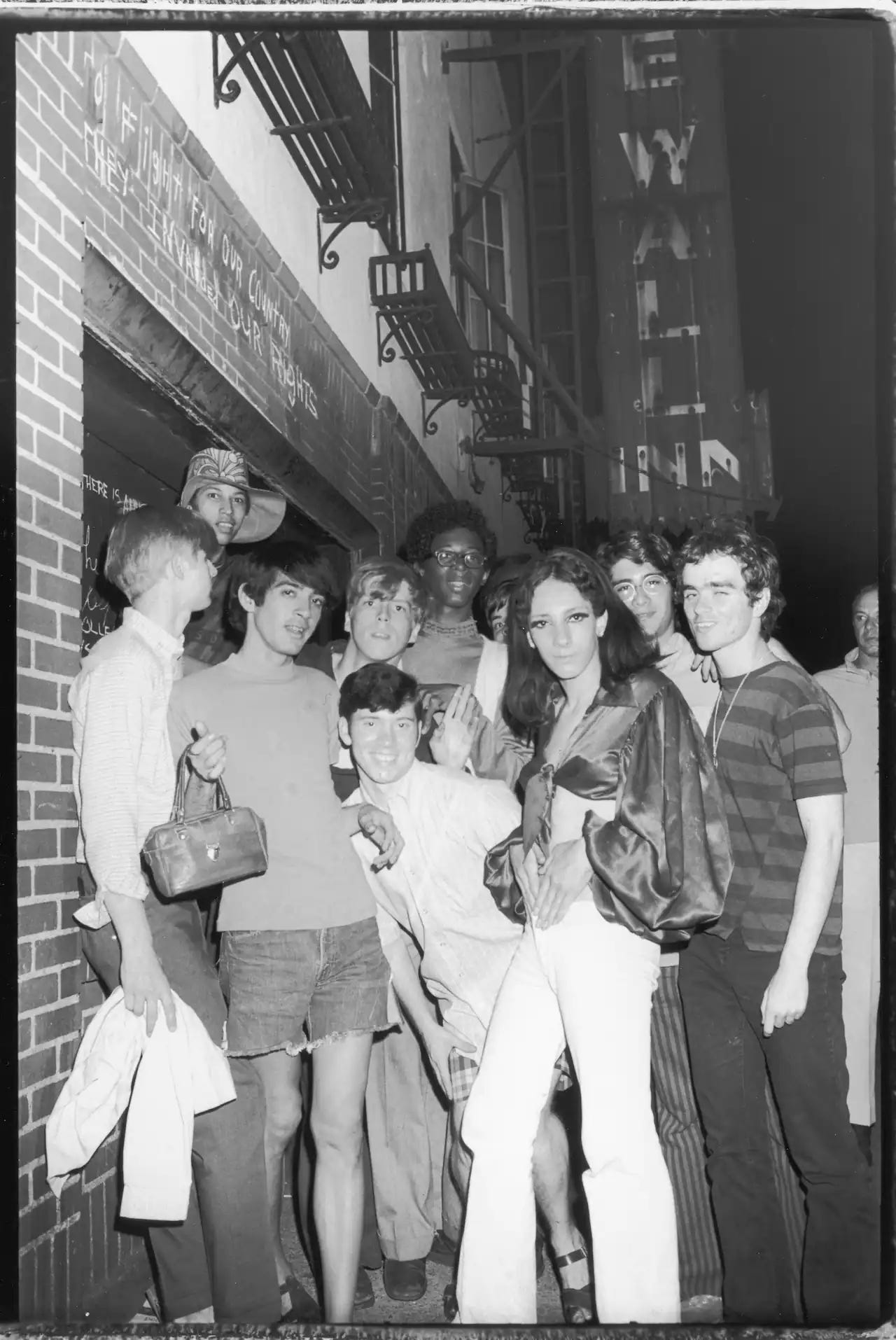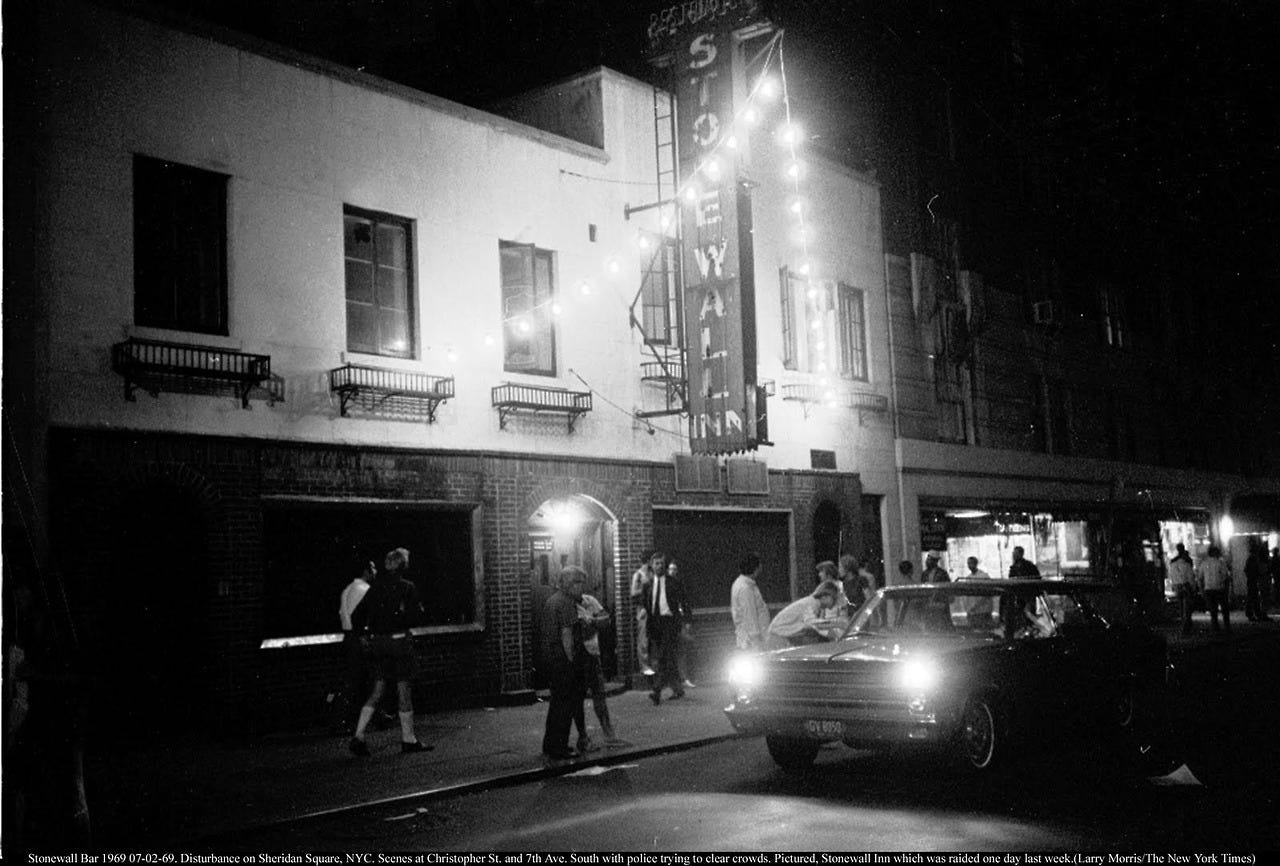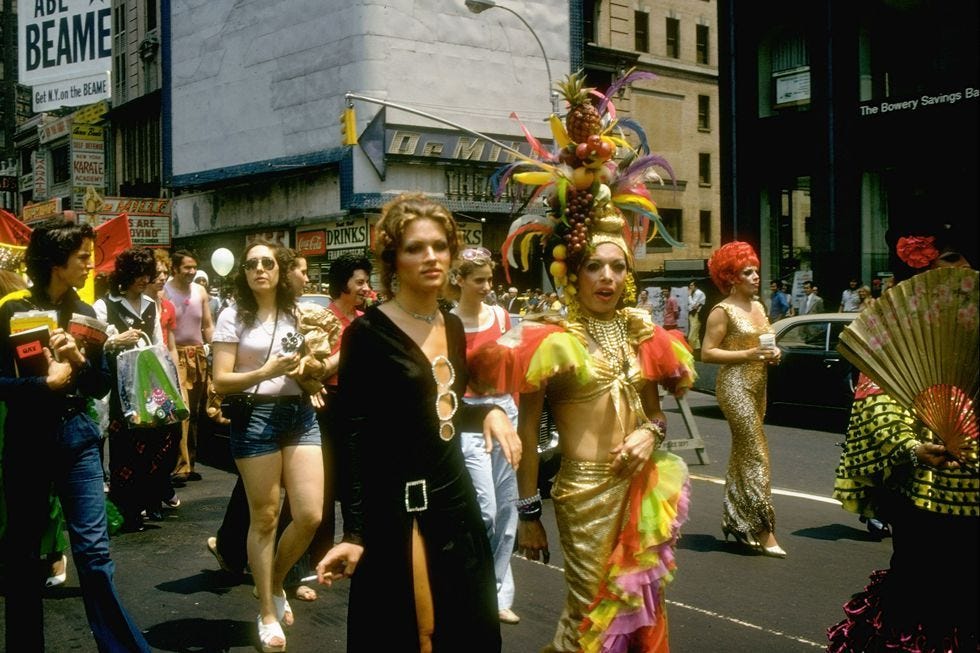It’s the early hours of June 28th,1969
New York City is still under the cover of night
The rats scavenge the barren streets for food
The pigeons sleep soundly in their nests
But hidden from public eye lies a secret world
A nightlife in the city that couldn’t be more alive
Behind a stonewall painted with blood and sweat
Would be the birthplace to a global movement
This is the story of a riot
A
revolutionbranded radicalA
peoplebranded outcastsAnd a
historybranded unimportant to the modern dayToday’s lesson begins at the birthplace of Pride: The Stonewall Inn
In Downtown Manhattan, a small bar in Greenwich Village was incredibly active. The Stonewall Inn, a speakeasy turned hangout spot for the gays of the city, was an escape from the reality of the day.
Laws outlawed masquerading, cross dressing, and the “solicitation of homosexual relations” —whatever the hell that means. Queerfolk’s existence was criminal and any visibility meant potential arrest, abuse, or worse. When night fell the Stonewall became protection: behind it was booze, bodies, and freedom to be yourself.
A diverse group of black, white, brown, young, slightly less young, gays, theys, and home-girls with braids would come to party and socialize until sunrise. A community formed that was supportive, inventive, and accepting of all who crossed the front doors. Stonewall, like many other gay bars, was a utopia for the many LGBTQ+ individuals in NYC who felt they were safe from persecution and prosecution when inside.
But like all good things, it was never perfect. Gay bars across NYC saw frequent raids by the police. To be fair it would be kinda hard not to notice a random building blasting Roberta Flack past midnight.
The police were well aware of these gay bars, often operating without liquor licenses and clearly violating anti-gay laws, and wouldn’t allow them to exist— without a price. The Stonewall Inn like many of its day paid weekly gayola’s to the NYPD, essentially these bribes allowed for homosexual activity to occur in these spaces, receive tips ahead of any scheduled raids, and avoid any serious investigation. The status quo was “the gays were criminals, but for a price society would look the other way”.
While the bars were reluctant participants in this exchange, the patrons themselves grew increasingly frustrated as some still saw random arrest and harassment. Imagine hiding away like vampires in the night to escape societal gaze, then creating a safe haven of like-minded friends to have fun, then being forced to pay a bribe to the authorities or risk abuse or serious charges, and STILL facing persecution and occasional abuse.
Everything soon changed when early that June morning at 1:20am detectives raided the Stonewall Inn unannounced. With no customary warning and the police more aggressive than usual, this raid was different. The frustration with the police reached a breaking point, and while stories contest who threw the first brick, whether Marsha P Johnson’s words to the crowd incited resistance or not, the police were met with an onslaught of slightly drunk fury.
Beer bottles, Soda Cans, Doc Martens, anything not strapped to the floor or their bodies was thrown at the police. In one funny anecdote, the crowd claimed the police raid was in response to an unpaid gayola. So logically they opted to pay the police, by pelting pocket change at them. Bar patrons joined with bystanders and nosy passerby’s in mounting an army against the initial responding offers.
This resistance kick-started an hours long offensive, with the NYPD bringing in back up to eventually arrest dozens of people. It wasn’t until 4:00am that the crowd cleared out, but that was just the beginning. Throughout the following days clashes of police and LGBTQ+ happened spontaneously, lasting a few hours until dissipating for the night and beginning again the next day.
This prolonged— history defining— resistance inspired numerous radical organizations to form. At a time when gay organizations were largely non-confrontational, this resistance birthed a wave of militant homophile groups who were willing to fight for gay rights. As the movement and event itself became memorialized as the Stonewall Riots.
While riot is a interesting— heavily debated— word choice, stonewall was certainly the site of a violent resistance against the status quo of police oppression. The anniversary of this event became a source of pride for the queer community as they held a march, eventually a parade, and in 2009 the entirety of June was designated as Pride month.
Okay really quickly I want to talk naming, because the Stonewall Riots have been a hotly debated term.
Some suggest the use of melee, rebellion, or uprising, to describe the event as riot has a modern negative connotation. Riots today are usually seen as a bad thing, destructive, aggressive, and criminal. But there is a huge power and pride to be found in the term: during the 1960’s being called a riot often meant you really stuck it to the big man, just ask Detroit.
As a chaotic, unplanned, violent, and resistance based event the term riot is a strong reminder of the radical and even revolutionary history. Stonewall was criminal, they were illegal, they were destructive, what they did by today’s and 1960’s values was wrong, but the context of justice and equality allow us to appreciate it as right.
So imma call it a riot.
Anyhow, modern incarnations of this month and day take a morphed shape. Rainbow capitalism, performative activism, ally-ship trophies, and more all represent the 56 year divide from Stonewall to today. Look no further than the NYPD who in 2019 apologized for their actions at the stonewall riots(something we’ll circle back to).
But why does that matter?
What power has been lost from this transition— pun intended— of Pride itself?
Iron fist meet Stonewall
Pride as a riot was threatening: America’s business as usual outlawed queer existence and expression. Sure the gays still existed but they couldn’t do so comfortably and without caution. In the 1960’s queerness was something you either kept to yourself, or suffered the consequences for. Most of the nation either saw homosexuals as criminal or never saw or thought of them at all.
1970’s America was hit with rainbow bullet, Pride wasn’t just public expression, or acknowledgement of queer existence. Pride was an open declaration of war to the status quo, after dawning rainbow colors the first Pride march took on the police, the religiously conservative, the ignorant, the discriminatory, and the nation itself.
At a time when the country wasn’t supportive Pride stuck the middle finger, dispelling modern notions of popularity, Pride didn’t care for acceptance or assimilation, it existed and ensured the country knew it did one way or another.
This radical declaration of existence cut through laws and narrative, forced visibility through protest, through marching, meant not only was the news and government coming to terms with gay people, but most Americans were as well. This decades long war on ignorance began with Stonewall, with the 1st Pride.
As America survived the 1980s with the AIDS epidemic and LGBTQ+ folk continued to mount a campaign for freedom of expression and equality, it was that historic moment of resistance and visibility which fueled the fight. It wasn’t until 2003 and 2015 that the country finally saw significant changes.
Without this historic offensive taken against then “American values” and unjust laws 2025 wouldn’t be as accepting of a place.
The First Pride was the Riot that snowballed the rainbow revolution which we live in today.
But it’s not all sunshine and rainbows.
If Pride began seeking revolution, and today has became a vehicle for the very oppressive behaviors, structures, and people it was birthed to fight against.
Make no mistake, queer visibility has become co-opted by abusive organizations who use it to promote their brands. Brands that will stick a logo on a float then revoke DEI behind closed doors.
Queer spaces are taken over by the very police who kick-started the Stonewall riots as they now receive standing ovations for their acknowledgement of past mistakes. All the while they ignore their current abuse, in the streets and on Rikers island, of black, brown, and queer bodies.
The very events intended to memorialize the history of stonewall have diluted it, replaced it with modern performances and half-measures that treat history as no more than a caricature. I must ask: In this un-radicalized Pride in an increasingly polarized world, what purpose does it serve today?
This was Lesson 1 of my all new “QueeRevolution” series for Pride. I appreciate your time here at The Garden Library. I invite you to subscribe and explore all there is to learn.
Until the next page unfolds.









